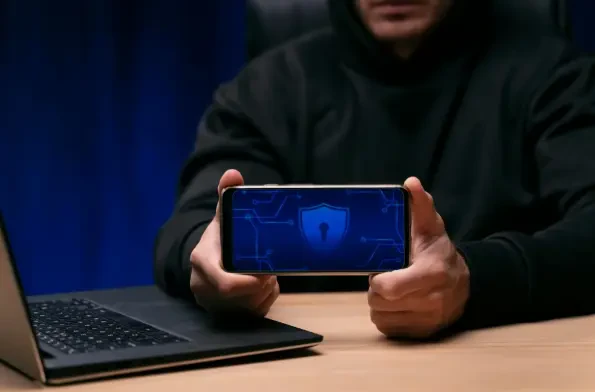In today’s fast-paced digital world, the proliferation of smartphones and text messaging has opened new avenues for scammers to exploit unsuspecting individuals. One of the most pressing threats in this domain is smishing, a deceptive practice where fraudsters use text messages to trick recipients into divulging sensitive information. This article explores the intricacies of smishing scams, answering key questions and offering insights into how one can remain vigilant and protected against these fraudulent schemes.
What is a Smishing Attack?
A smishing attack can be described as the SMS-era adaptation of phishing scams. In essence, a smishing attack involves sending fraudulent text messages purporting to come from reputable organizations. These messages often contain harmful links or calls to action designed to harvest personal information or financial details. They prey on the urgency and trust that text messages inherently carry, leading recipients to act without due diligence. The attacker’s goal is to manipulate the victim into revealing information like passwords, credit card numbers, or social security numbers, often by masquerading as a trusted entity. The fake websites these links lead to are often indistinguishable from legitimate ones, making detection difficult without careful scrutiny.
How Does a Smishing Attack Work?
The Fake Message Arrives
Smishing attacks begin with a seemingly innocuous text message that often appears to be from a trusted source such as a bank, courier service, or government agency. These messages typically alert the recipient to an issue like unusual account activity or a parcel delivery problem, aiming to instill a sense of urgency.
The Text Contains a Lure
The message crafted by the scammer will include a lure—either a threat or a reward—prompting immediate action. This might be something enticing, like winning a prize, or something concerning, like the risk of a suspended bank account. The demand for urgent action is what often tricks people into responding hastily.
You Respond or Click the Link
Response to the message might involve clicking on a link or contacting a provided phone number. These actions lead the victim to counterfeit websites or fraudulent operators intent on extracting personal data. In certain instances, clicking a link could inadvertently download malware onto the victim’s device, compromising their digital security further.
Or Answer Questions
Some smishing messages employ tactics without direct links, instead requesting a reply containing a code or personal details. The interaction is designed to feel harmless at first, but continued engagement enables scammers to gradually collect enough information to compromise the victim’s security.
What Are Common Types of Smishing Attacks?
Delivery and Parcel Scams
These scams exploit the popularity of online shopping by mimicking messages from delivery services. The text might indicate a delivery failure or require payment for customs or storage fees, enticing the recipient to click a link or enter personal information.
Bank or Financial Alerts
Smishers often leverage the critical nature of financial security by impersonating banks or credit institutions. The message warns of suspicious activities or account issues, nudging recipients to act immediately by following a fishy link or calling a fraudulent number.
Prize, Lottery, or Voucher Scams
Messages promising free prizes, gift cards, or vouchers are frequent smishing tactics. They aim to capitalize on the excitement of winning something valuable for nothing, steering victims to fraudulent sites where they unknowingly provide personal and financial data.
Subscription or Service Alerts
These attacks imitate notifications from services like streaming platforms or e-commerce sites. They might falsely claim subscription renewals or require payment updates, misleading users into surrendering login credentials or payment details.
How to Protect Yourself from Smishing Attacks
Never Click Unexpected Links or Attachments
Exercise caution when receiving unexpected text messages, especially those with links or attachments. Legitimate companies rarely request personal data via text, so it’s safest to verify the claims through secure channels.
Verify by Contacting the Company Directly
Instead of trusting the contact information provided in the suspicious message, reach out to the company using official contact details from their website or other verified sources. This protects you from engaging with impostors.
Be Suspicious of Urgency and Freebies
Treat messages that demand immediate action or promise something too good to be true with suspicion. Legitimate businesses typically don’t employ extreme pressure tactics or offer unsolicited rewards without prior involvement.
Check the Sender and Message Details
A keen eye can often spot a scam message. Look for unusual sender information and scrutinize grammatical errors or awkward phrasing, which are telltale signs of potential fraud.
Use Security Features on Your Phone
Empower your phone’s built-in security tools and maintain updated software to fend off potential threats. Additionally, consider installing reputable security apps that alert you to dubious content or incoming threats.
Block and Delete
Once a message is confirmed as fraudulent, block the sender to prevent further communication and delete the message. Staying alert is crucial since scammers often change numbers frequently.
Tell Friends and Family
Raising awareness among friends and family who may not be familiar with smishing scams is invaluable. Sharing experiences and information about recent scams can help protect others from falling victim.
What to do if You’re a Victim of a Smishing Attack?
Stop and Assess
Remain calm if you think you’ve fallen for a smishing scam. Cease interactions with any suspicious website or scammer immediately, and disconnect from the internet if possible.
Change Your Passwords
Swiftly update passwords for any accounts that might have been compromised. Utilize strong, unique passwords and consider enabling two-factor authentication for added security.
Notify Your Bank or Card Provider
If financial information appears to be jeopardized, promptly contact your bank or credit card provider. They can halt unauthorized transactions and initiate protective measures.
Report the Scam
Contributing to the communal effort to fight scams is important. Report smishing incidents to relevant authorities and the companies impersonated by the scammers, aiding efforts to track trends and protect others.
Check Your Device
Run security scans on your device if it shows signs of malware infection. Remove suspicious applications and consider a factory reset if needed, ensuring backups are secure.
Watch Your Accounts
Vigilance over account statements and online activities following an attack is advisable. Report any anomalies promptly to preclude further damage.
Learn
Reflect on the experience and understand the patterns of the scam to bolster personal defenses. Sharing this knowledge aids in community vigilance against future attacks.
In the face of evolving threats like smishing, understanding the strategies and tactics used by scammers can empower individuals to safeguard their information. As technology continues to advance, cyber defenses must be a priority. Maintaining a vigilant stance and promptly addressing any suspicious activity can help mitigate risks and enhance personal security. In a connected world, awareness and education are formidable allies against the persistent threat of smishing, ensuring that users can enjoy digital interactions without compromising their safety.













